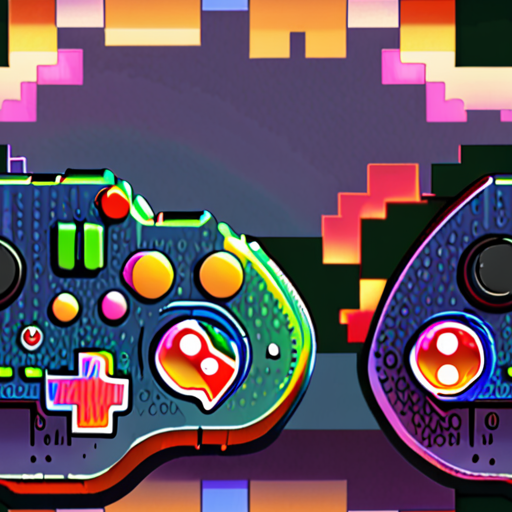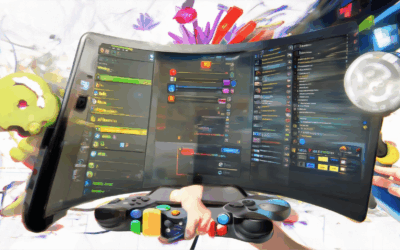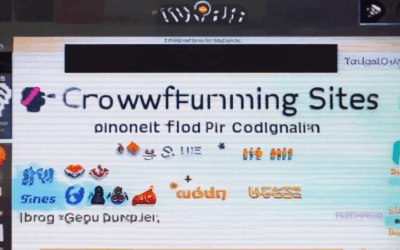When it comes to bringing your video game project to life, securing the necessary funds can be a daunting task. This is where crowdfunding platforms come into play, offering a viable alternative to traditional funding methods. With numerous options available, choosing the right crowdfunding platform for your video game project can be overwhelming, especially considering the varying success rates and fees associated with each platform.

Choosing the Best Crowdfunding Platform for Your New Video Game Project
As an indie game developer, selecting the ideal crowdfunding platform for your project can be a daunting task.
- Research Popular Options: Familiarize yourself with well-known platforms like Kickstarter, Fig, and Indiegogo, which cater specifically to video game projects.
- Consider Fees and Commission Rates: Understand the costs associated with each platform, including payment processing fees, campaign promotion fees, and revenue sharing models.
- Evaluate Community Engagement: Assess the level of support and interaction offered by each platform, including access to community forums, social media groups, and dedicated customer support.
- Analyze Success Stories and Statistics: Review the track records of previous campaigns on each platform, including funding goals achieved, average pledge amounts, and overall success rates.
- Assess Integration with Development Tools: Determine whether each platform offers seamless integration with popular development tools, such as Unity, Unreal Engine, or GitHub.
- Look for Flexible Funding Models: Choose a platform that allows you to adjust your funding goals, stretch goals, or rewards tiers to better suit your project’s needs.
- Check for Transparency and Accountability: Ensure the platform provides clear guidelines on campaign moderation, dispute resolution, and refund policies.
- Read Reviews and Ask for Referrals: Gather feedback from fellow developers who have successfully crowdfunded their projects on each platform.
- Test the Waters with a Pilot Campaign: Consider running a small-scale pilot campaign to gauge interest, test the waters, and refine your strategy before launching a full-fledged campaign.
By carefully evaluating these factors, you’ll be well-equipped to choose the best crowdfunding platform for your new video game project and increase its chances of success.
Finding the Right Fit for Your Game
Ultimately, the best crowdfunding platform for your game depends on your unique needs, goals, and target audience.
- Indie Developers: Platforms like Kickstarter and Fig offer a great balance between flexibility and exposure, making them ideal for indie developers.
- AAA Titles: Larger studios may prefer platforms like Indiegogo, which offer more advanced features and higher visibility for bigger-budget projects.
- Niche Audiences: Platforms like Patreon and Ko-fi cater to niche audiences, allowing developers to connect directly with fans and receive recurring support.
Tips for a Successful Crowdfunding Campaign
To maximize your chances of success, remember to:
- Create Engaging Content: Develop a compelling narrative, showcase high-quality visuals, and share regular updates to keep backers invested.
- Set Realistic Goals: Establish achievable funding targets and reward tiers to avoid disappointing backers and maintain credibility.
- Build a Strong Community: Foster relationships with backers, engage in discussions, and respond promptly to questions and concerns.
- Monitor and Adjust: Continuously evaluate your campaign’s progress, adjust your strategy as needed, and stay adaptable to changing circumstances.
Key Factors to Consider When Selecting a Reliable Crowdfunding Platform for Launching a Successful Video Game Campaign
When it comes to launching a successful video game campaign, choosing the right crowdfunding platform is crucial.
- Research and Compare Popular Options
- Funding goals and rewards
- Platform fees and payment processing costs
- User interface and community engagement
- Marketing and promotion options
- Integration with social media and online communities
- Evaluate Fees and Payment Processing Costs
- Understand the fee structures and calculate the total cost of running a campaign
- Consider the impact of fees on the overall success of the campaign
- Assess User Interface and Community Engagement
- Evaluate the ease of use and navigation of the platform
- Assess the level of community engagement and support offered by the platform
- Explore Marketing and Promotion Options
- Evaluate the effectiveness of these options and their associated costs
- Consider integrating social media and online communities to reach a wider audience
- Consider Integration with Social Media and Online Communities
- Evaluate the integration options and their associated costs
- Consider leveraging social media and online communities to promote the campaign
- Read Reviews and Check Reputation
- Evaluate the overall satisfaction and success rates of previous campaigns
- Assess the level of customer support and service offered by the platform
- Check for Security and Compliance
- Evaluate the platform’s security measures and compliance with relevant regulations
- Assess the level of transparency regarding security and compliance
There are several popular crowdfunding platforms available, each with its own set of features and fees.
Crowdfunding platforms charge various fees, including platform fees, payment processing costs, and conversion fees.
A user-friendly interface and active community can significantly contribute to the success of a campaign.
Crowdfunding platforms often offer various marketing and promotion options to help increase visibility and drive traffic to the campaign.
Integrating social media and online communities can help increase visibility and drive traffic to the campaign.
Research the reputation of the crowdfunding platform and read reviews from other users.
Crowdfunding platforms must comply with various regulations and security standards to protect user data and funds.
By carefully evaluating these key factors, you can make an informed decision and choose the most suitable crowdfunding platform for your video game campaign.

Top Crowdfunding Platforms for Video Game Developers
Crowdfunding has become a vital source of funding for many video game developers, allowing them to raise money from a large number of people and gain exposure for their projects.
-
Kickstarter
Kickstarter is one of the most popular crowdfunding platforms for video game developers, with a success rate of around 36%.
The platform allows developers to set a funding goal and deadline, and backers can pledge money in exchange for rewards such as early access to the game or exclusive content.
Kickstarter charges a fee of 5% of the total funds raised, plus payment processing fees of 3-5%.
-
Indiegogo
Indiegogo is another well-known crowdfunding platform that offers flexible funding options, allowing developers to keep their project even if they don’t reach their funding goal.
Indiegogo charges a fee of 4% of the total funds raised, plus payment processing fees of 2.9% + $0.30 per transaction.
-
Fig
Fig is a crowdfunding platform specifically designed for video game developers, offering a unique approach to funding and community engagement.
Fig charges a fee of 10% of the total funds raised, plus payment processing fees of 3-5%.
-
Patreon
Patreon is a subscription-based crowdfunding platform that allows developers to receive recurring funding from their fans and supporters.
Patreon charges a fee of 5% of the total funds received, plus payment processing fees of 2.9% + $0.30 per transaction.
-
Gamefound
Gamefound is a crowdfunding platform specifically designed for tabletop gaming projects, but it also supports video game development.
Gamefound charges a fee of 8% of the total funds raised, plus payment processing fees of 3-5%.
When choosing a crowdfunding platform, consider factors such as fees, success rates, and community engagement.
By understanding the strengths and weaknesses of each platform, developers can make informed decisions and increase their chances of success.
Ultimately, the best crowdfunding platform for a video game developer will depend on their specific needs and goals.

Top Crowdfunding Platforms for Video Game Projects
As a game developer, finding the right crowdfunding platform can make all the difference in bringing your project to life.
- Kickstarter: One of the most popular crowdfunding platforms, Kickstarter has been instrumental in launching numerous successful video game projects. With its vast community and flexible funding options, it’s an ideal choice for many developers.
- Indiegogo: Another well-established platform, Indiegogo offers a range of features that cater to game developers, including flexible funding and a large community of backers.
- Gamefound: A relatively new player in the market, Gamefound is specifically designed for tabletop gaming projects, including board games and card games. However, it’s worth considering for those looking for a more niche-focused platform.
- Fig: Fig is a unique platform that allows developers to raise funds for their projects through a subscription-based model. Backers receive exclusive rewards and updates in exchange for their support.
- Patreon: While primarily known for supporting ongoing creative projects, Patreon can also be used for crowdfunding video game projects. Its flexible funding model and community-driven approach make it an attractive option for developers.
When choosing a crowdfunding platform, consider factors such as fees, community engagement, and flexibility. Each platform has its strengths and weaknesses, so it’s essential to select the one that best suits your project’s needs.
Key Considerations for Choosing a Crowdfunding Platform
- Fees: Understand the fees associated with each platform, including payment processing charges and commission rates.
- Community Engagement: Look for platforms with active communities and engaged backers who can provide valuable feedback and support.
- Flexibility: Choose a platform that offers flexible funding options, allowing you to adjust your campaign goals and rewards as needed.
- Marketing Support: Consider platforms that offer marketing support and promotional tools to help boost your campaign’s visibility.
Tips for Running a Successful Crowdfunding Campaign
- Create Engaging Content: Develop a compelling campaign page with high-quality visuals, videos, and written descriptions that showcase your project’s unique features.
- Set Realistic Goals: Establish achievable funding targets and reward tiers that align with your project’s scope and budget.
- Build a Strong Community: Foster relationships with your backers through regular updates, behind-the-scenes content, and interactive engagement.
- Monitor and Adjust: Continuously track your campaign’s progress, making adjustments as needed to optimize your strategy and reach your goals.
Essential Features to Look for in a Crowdfunding Platform for a Successful Video Game Campaign
When launching a video game campaign through crowdfunding, selecting the right platform can make all the difference between success and failure.
- Flexible Funding Options
- Robust Community Tools
- Marketing and Promotion Support
- Project Management and Tracking
- Security and Payment Processing
- Analytics and Reporting
- Integration with Popular Development Tools
- Community Engagement and Feedback
- Customer Support and Resources
Crowdfunding platforms offer various funding models, including all-or-nothing and keep-it-all approaches. Consider which model aligns best with your project’s needs and goals.
A strong community is crucial for a successful crowdfunding campaign. Look for platforms that offer features like discussion forums, social media integration, and rewards management to facilitate engagement and interaction with backers.
Crowdfunding platforms often provide marketing and promotion support to help campaigns reach a wider audience. Evaluate the types of promotional tools and services offered, such as email marketing, social media advertising, and influencer partnerships.
A well-organized project management system helps ensure timely delivery and effective communication with backers. Opt for platforms that offer features like project updates, milestone tracking, and reward fulfillment management.
Choose a platform that prioritizes security and offers reliable payment processing to protect both backers and creators. Look for platforms with secure payment gateways, escrow services, and transparent refund policies.
Access to real-time analytics and reporting enables creators to monitor campaign progress, identify areas for improvement, and adjust their strategy accordingly. Select platforms that provide detailed analytics and reporting tools.
Consider platforms that integrate with popular development tools, such as game engines, project management software, and version control systems. This streamlines the development process and reduces technical hurdles.
A platform that fosters community engagement and encourages feedback from backers can lead to a more successful campaign. Look for platforms that offer features like surveys, polls, and community-driven decision-making processes.
Effective customer support and access to valuable resources, such as tutorials, webinars, and documentation, can significantly impact the success of a crowdfunding campaign. Choose platforms that offer responsive customer support and a wealth of educational materials.
By considering these essential features, you can select the most suitable crowdfunding platform for your video game campaign and increase its chances of success.

Effective Crowdfunding Strategies for Video Game Projects
Crafting a successful crowdfunding campaign requires careful planning, execution, and a deep understanding of your target audience.
- Define Your Project Vision and Goals
- Choose the Right Platform
- Create Engaging Content
- Leverage Social Media and Community Building
- Offer Incentives and Rewards
- Set Realistic Funding Goals and Timelines
- Foster Transparency and Open Communication
Determine what makes your game unique, identify your target audience, and set realistic funding goals.
Select a reputable crowdfunding platform that aligns with your project’s needs, such as Kickstarter, Fig, or Indiegogo.
Develop a compelling pitch, showcase high-quality visuals and gameplay footage, and share updates regularly to keep backers engaged.
Establish a strong online presence, engage with potential backers, and foster a sense of community around your project.
Provide exclusive rewards, early access, or behind-the-scenes content to incentivize backers and encourage sharing and word-of-mouth promotion.
Establish achievable funding targets and milestones, and communicate these clearly to your backers.
Keep backers informed about project progress, challenges, and changes, and be responsive to feedback and concerns.
Popular Crowdfunding Platforms for Video Games
Kickstarter, Fig, and Indiegogo are well-established platforms for video game crowdfunding, each with its own strengths and features.
- Kickstarter
- Fig
- Indiegogo
Kickstarter has been a go-to platform for many successful video game campaigns, offering flexible funding options and a large community of potential backers.
Fig focuses on gaming-specific crowdfunding, allowing developers to connect directly with gamers and offer exclusive rewards and experiences.
Indiegogo offers flexible funding options and a global reach, making it an attractive choice for developers looking to tap into international markets.
Conclusion
A successful crowdfunding campaign requires careful planning, engagement, and transparency. By choosing the right platform, creating compelling content, and fostering a sense of community, developers can increase their chances of achieving their funding goals and bringing their vision to life.




0 Comments